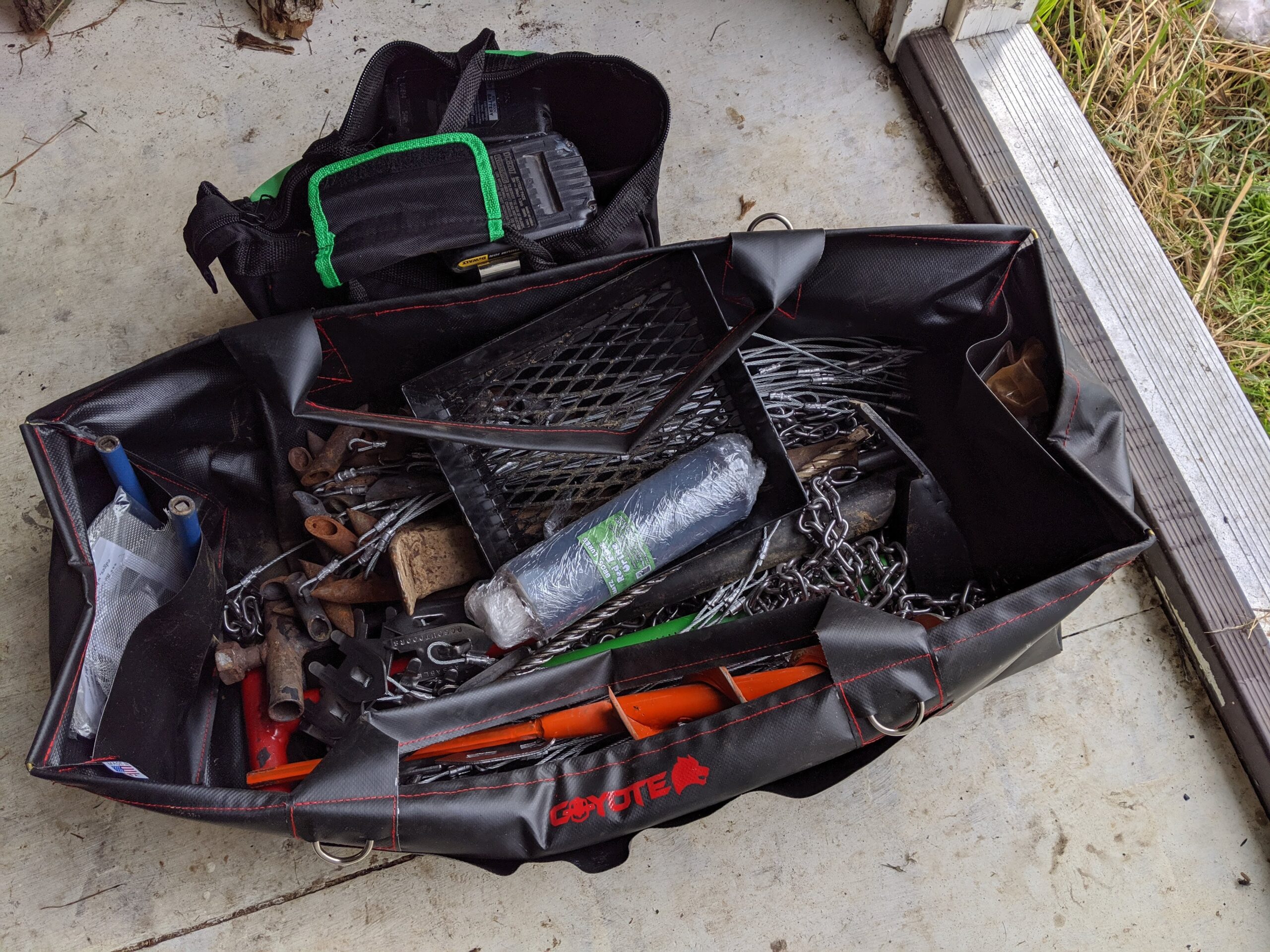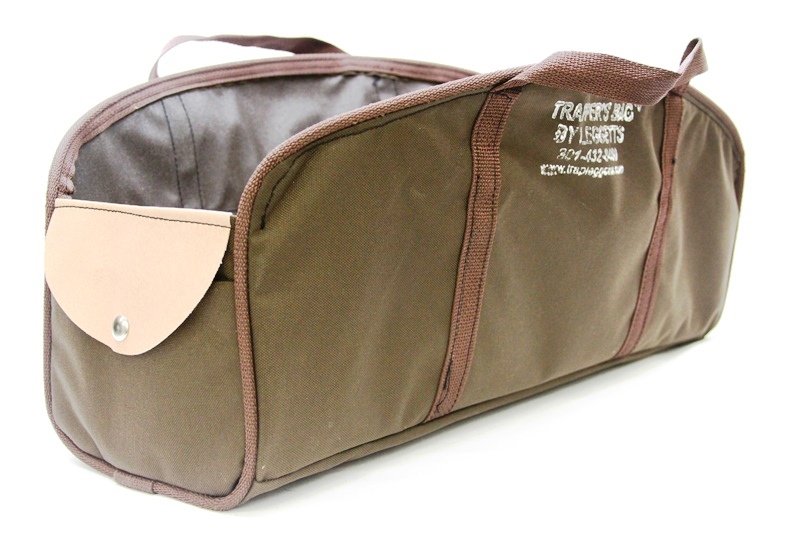As trappers, we carry a lot of tools around to make effective sets and catch furbearers. From dirt digging tools and hammers to traps, stakes, lures and more, there gear can really start to add up! Like most people, I started out toting my trapping supplies in a five gallon bucket. To deal with the small tools and accessories a bucket organizer with lots of pouches on the outside proved to be useful. But buckets aren’t mean to carry tools. Their tall shape leads to a high center of gravity, especially when used on uneven ground surfaces that are typical of the trapline. Tipped over buckets and lost tools are a real pain. Even when the bucket is upright and your gear is in it, the tall narrow design makes it difficult to find things at the bottom. Everything is packed into a tight area and you often have to rummage around and remove other tools to find what you need. It wasn’t long before I realized I needed a trapping bag.
Trapping bags come in a variety of shapes and sizes, and each has its own advantage over the traditional five gallon bucket. Some are similarly narrow but not as tall, and made of soft, flexible material. Others, the ones I prefer, are shallow and long, making it easy to fit all your gear in and access it quickly when you need it.
A few years back, Kris Pope from Coyote Trapping School designed the “Shortliner Trapping Bag”, which for me was the ideal trapping bag. I used it primarily for coyote trapping, but also used it on the water trapping line for beaver and otter as well. The bag was constructed of heavy duty poly material which was super thin and lightweight, and also didn’t hold scent like other materials. Most trapping bags are shorter than I like, but this one was as long as all of my tools as well as my earth anchor drivers. It had an open top that made everything easily accessible. Kris stopped making the bags and they are no longer available to purchase, but I still use mine regularly.
One of the most popular trapping bags available today is the Leggett’s Trapper’s Bag. This is a relatively long, narrow bag with an open top design and made of heavy duty nylon. Although I’d prefer a longer bag, this one is about as close as you can get in the trapping industry today. The bag includes plenty of pouches for storage, is pretty light weight, and has a reputation of holding up to heavy use.
If you don’t mind a shorter or bucket-shaped bag, there are a few others trapping bags available to check out. Montana Trapper Bags makes some nice high quality vinyl bags for coyote and beaver trapping.
Sometimes you have to go outside of the trapping industry to find something that works, and there are a few gardening and tool bags available on Amazon that might work on your trapline.
Whatever bag you choose for trapping, make sure it works best for your individual uses and needs. Try a few different designs and see what you like. The right bag for your gear is one step toward improved efficiency and success on the trapline!










Leave a Reply